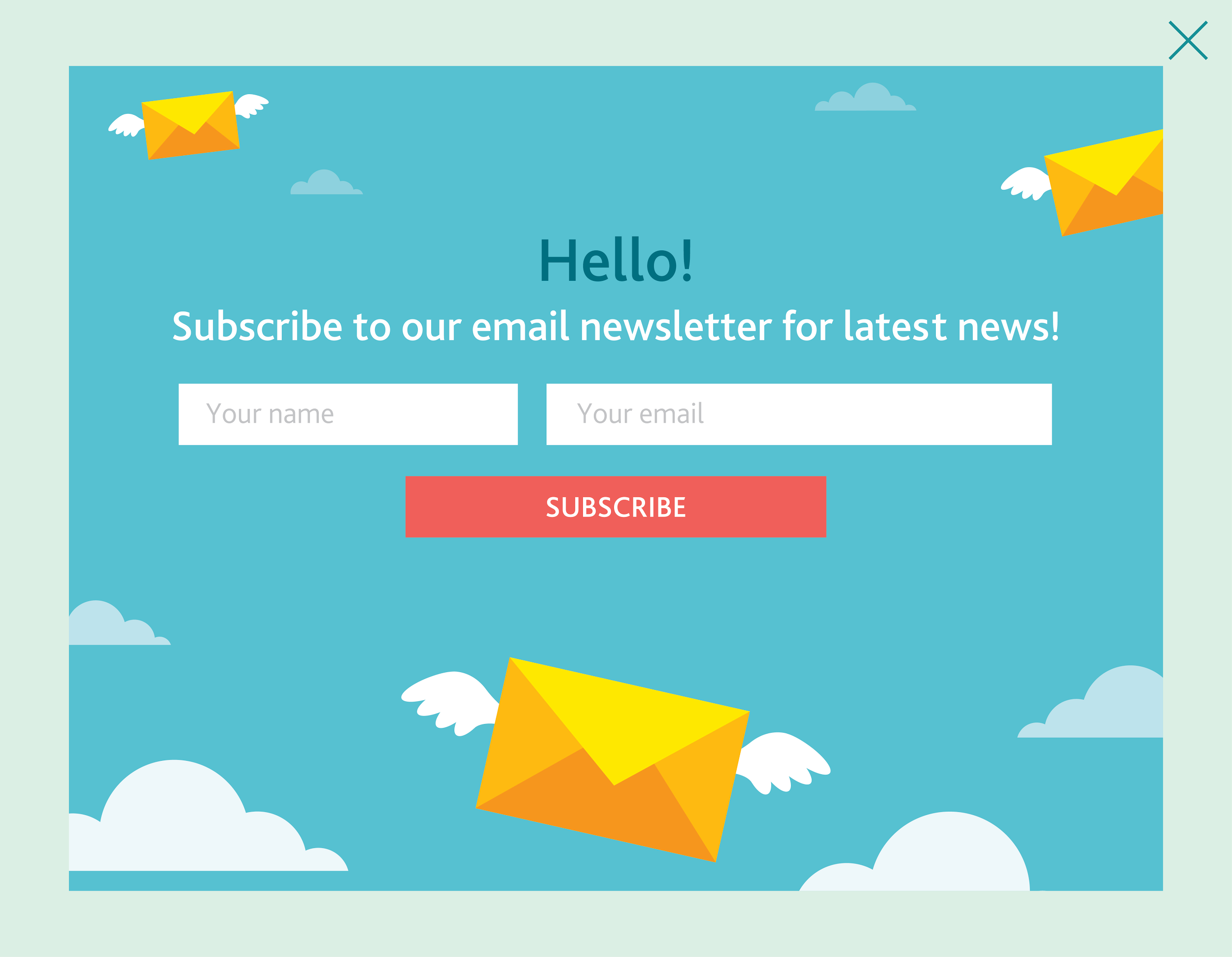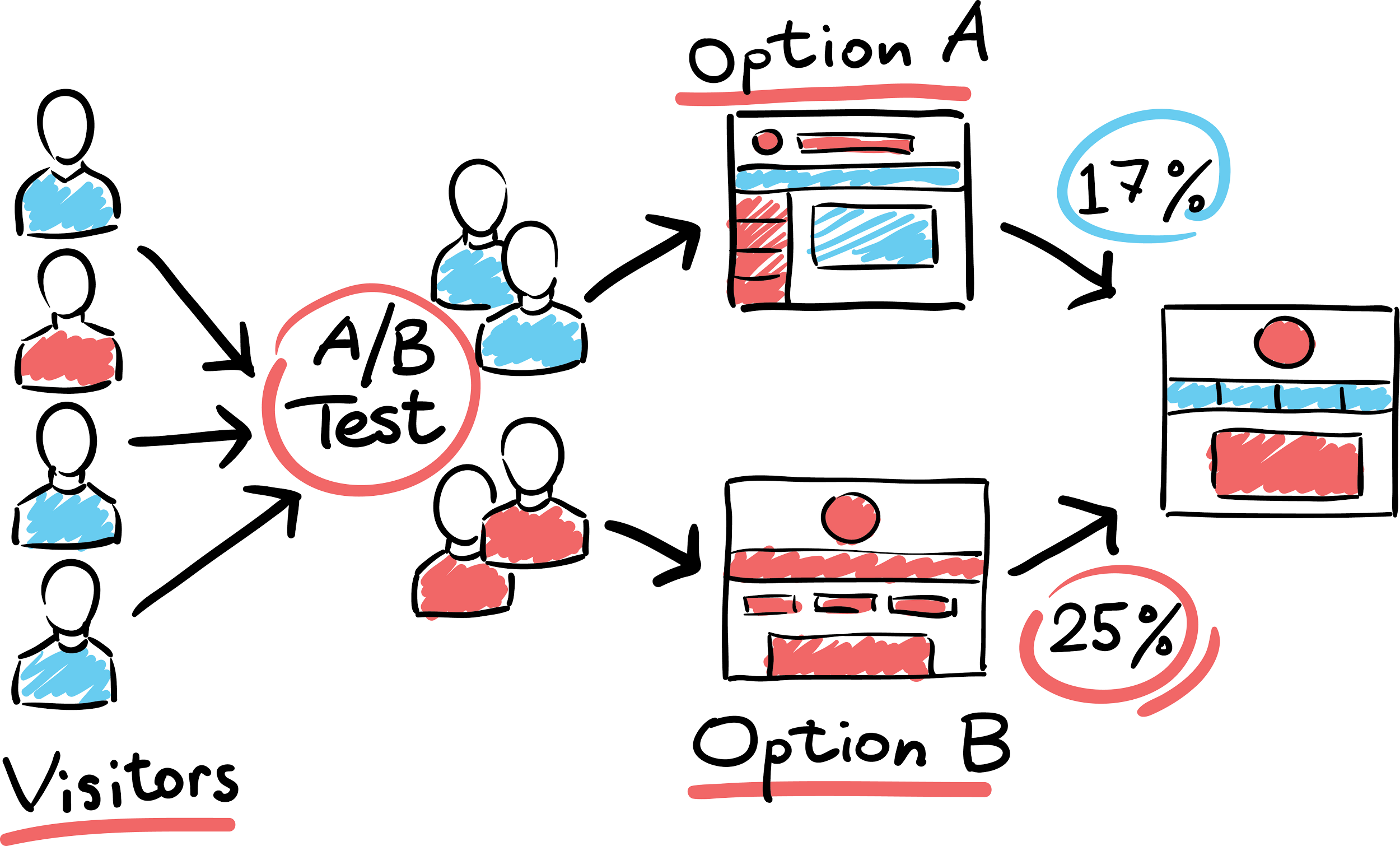![]() Posted by Cameron Francis
on
06 Jan , 2017
in
News Uncategorized
Posted by Cameron Francis
on
06 Jan , 2017
in
News Uncategorized

Digital Marketing Strategies for Start-Ups & Companies.
Forget the “build it and they will come” rhetoric… it’s just a nice cliché successful entrepreneurs use to give startup owners a glimmer of hope.
As for the overnight success stories: the less said, the better.
If you’re going to take your startup to the top, be prepared to work hard and overcome a ton of challenges.
Marketing being one of the biggest of them.
Learn from Apple’s experience and Apple’s iPhone Marketing Strategy as we expose it how they sold over a billion iPhones in ten years.
What Makes Startup Marketing So Difficult?
The truth is – entrepreneurs aren’t usually very good marketers.
Some still believe in the Ralph Waldo theory that if you build a better mousetrap, then the world will beat a path to your door.
So, you’ll find startup founders focusing mainly on making their product better instead of getting eyeballs.
MUST READ: Digital Marketing Strategies for Startups
The assumption is that once that ‘irresistible’ product goes to the market, then consumers will have no choice but to buy it.
Not exactly!
People rarely buy something because it is the best product.
They may buy it because it’s popular and because it has been endorsed by both their friends and influencers.
In other words, better marketed products often sell more compared to superior products.
Another reason an entrepreneur finds marketing difficult is because marketing may not have been the primary motivation in putting up the business.
It is not considered a priority that’s why it’s often the first to receive budget cuts, when deemed necessary.
To make up for their little knowledge and experience, startups make the big mistake hiring expensive advertising agencies or recruiting sales and marketing staff from the big companies.
Problem is, these people are clueless about marketing on a tight budget.
Finally, startups face one major obstacle not shared by more entrenched companies.
Well, being a small fish in a large pond, startups have to compete with companies that have or can afford larger advertising and marketing budgets.
RELATED:
What They Never Taught You in School About Digital Marketing for Startups
One Thing You Must Always Do to Make Your Startup Irresistible to Customers
What Can You Do to Succeed?
That’s what the rest of this guide is all about; how you can stand out from the crowd and compete with the big fish on a shoestring budget.
But you need to understand that most of these strategies require a lot of dedication to get results.
More importantly, you’ll need to change your perception about marketing: consumers must appreciate your product for it to sell.
This is regardless of how cool the product is.
Step 1: The basics
You start by laying a solid foundation. This is achieved by having the following covered;
Define your market
It’s a mistake for entrepreneurs to believe that the whole world will want your product. The reality is only a small portion of the population will be interested to buy your product or service.
So, it’s best to identify this market. Doing so would save you lots of time and money.
This is how to do it.
Market size – How many people are in the market? It makes little sense to create a product that appeal to only a handful of people.
Market wealth – Does your target market have the money to buy your products or services?
This should go hand-in-hand with the market size.
Market competition – This is very important.
How many competitors will you be facing? Will there still be a slice of the market that you can attract? Who will be your biggest rivals?
Your value proposition – Is your value proposition strong enough to cut through the noise?
Will your marketing messages reach your target audience?
RELATED:
Identify and Understand Your Target Market
How to Engage the Right Audience
7 Content Marketing Secrets Your Competitors Wish You Didn’t Know
Define your keywords
Marketing using the internet means you’ll be counting on how easily potential customers can find you on search engines and other online sources.
The easier you are to find, the less you’ll have to spend to amplify your marketing messages to your target audience.
Your biggest advantage is that you have a well-defined market.
The challenge then is to build a list of words and phrases that this target audience is likely to use when trying to find the type of products or services you sell.
Start with a core keyword list of three to five most relevant keywords.
Top 5 Tools For Keyword Research:
2- https://ahrefs.com/keywords-explorer
3- https://moz.com/tools/keyword-difficulty
4- https://www.semrush.com/features/keyword-research/
5- https://adwords.google.com/KeywordPlanner
Below are guides that may help you with your keyword research:
Figuring Out the Right Keyword for Your Website
Why focus in keyword phrase, not single word keywords
Understanding the Keyword Density
Keyword Research Using Google Trends
For a Caravan Manufacturer, for example, you can use,
“New Caravans”,
“Luxury Caravans”,
“Off-Road Caravans”, as core keywords.
In essence, the keywords should be based on your value proposition.
These should answer the question:
“What are you offering?”
From that list, you can then come up with a secondary keyword list.
From “New Caravans” for example, secondary keywords could include;
“New Caravans For Sale”,
“New Caravans Melbourne”,
“New Caravans Review”, and so on.
You can use free tools to find out which keywords are already sending traffic to your site.
Then, use UberSuggest and KeywordTool.io to identify your most effective keywords.
These two will return the best keywords with low competition and high traffic.
Define your core metrics.
You won’t go far if you don’t measure.
It’s only through measurement that you’ll be able to identify and fix potential issues in your marketing.
Unfortunately, metrics vary greatly depending on the industry.
For instance, in email marketing, the most important metric is Click Through Rate (CTR) but for a software developer, the most important metric is the number of quotes requested. In 2015, CTR is one important ranking factor.
Given this, your metrics should be based on factors that are closely tied to your end goals.
Signups, newsletter subscriptions, and e-book downloads are a few examples that apply to most industries.
Since you can’t measure everything, focus on key indicators of success.
Step 2: Use Content to Get the Message Out
The fun thing about content marketing is that it’s easy and costs… nothing if you can do it alone.
Even if you decide to go with a content marketing company, this strategy is still one of the most cost effective.
Here is what to do:
Start a blog
If you think blogging can be expensive, don’t even call it a blog.
Just set aside some space on your website where you can regularly post content.
Doing the following tips should help you squeeze enough juice from the blog without spending a great deal;
- Post it on the same root domain as your main site
Don’t create a new blog that is called blog.example.com.
That creates a new root domain and a new link profile for which you may need costly SEO campaigns to get the new blog to the top of search engines.
- Use WordPress
The great thing about WordPress is that it’s free.
Well, a few advanced features come at a price but if all you need is a blog, they won’t charge you.
- Link to the blog from your main site
Internal linking is one of the best practices in content marketing.
It makes it easier for search engines to crawl your site and boosts conversion. See different link building strategies to boost your website traffic.
Keep a regular posting schedule
The idea is to create a habit among your audience of visiting your site.
For startups, Kissmetrics recommends posting once a week.
So, where do I get the content?
Content can be expensive.
Some copywriters charge between $400 and $700 per post.
As a startup, you may not be ready to shell out so much money on content yet.
Instead, you could consider the following:
- Do the content yourself
A great post may only take about an hour or two. If you’re up to the task, find time, come up with article titles and use the titles to create some awesome posts for your blog.
- Assign the task to one of your staff members
If you already have a marketing team, you can ask them to create the posts.
Alternatively, rotate the blogging schedule among the members of staff.
- Hire a freelancer
Perhaps the best option, hiring a specialized freelance writer only costs between $40 to $200 per hour.
- Use a content provider
Content providers are websites that sell pre-approved content.
The provider’s the one to hire writers to create content and editors to tighten up the copy before putting the article up for sale.
A good example of a content provider is Text Broker which sells articles at around $1.3 cents per word.
Guest Blogging is GREAT
Guest blogging is essential for startups.
First, guest posting on popular blogs is a great way to build your reputation within your industry and it can help to boost business reputation and traffic.
Secondly, having someone influential guest blog for your site is an effective way to drive traffic.
Repurpose your content, mixing up text and visuals
The downfall of most content marketers is that they dwell exclusively on blogging.
Content marketing covers several other content formats which are better at penetrating different markets.
For instance, if you’re in B2B, then you should consider whitepapers and industry reports to reach high-level executives.
You may also hold webinars and post the videos online.
Video blogs and ebooks are two other content formats with a high ROI.
Step 3: Tap into email marketing
AWeber has created an excellent guide on email marketing for startups.
What you need to realize is, although email is still the marketing strategy with the highest ROI, the cost of email campaigns has been rising.
The following best practices should help you get started on the right path;
Contact list
- Practice permission-based email marketing
Before adding anyone to your email list, ask if they’d like to be on that list.
Permission-based email marketing promises a higher open and click through rate.
- Use gated content and giveaways to get more people to subscribe to your emails
When you offer a free ebook, for example, provide a form that the site visitor needs to complete before they can download the e-book.
- Update your contact list from time to time
At least once every six months, pick up your email list and shake things up.
Take out addresses that were entered incorrectly as well as contacts that haven’t responded to your messages in the past six months.
Subject line
The subject line can make or break your email campaign.
Get it right and a majority of recipients will be more than happy to open your emails.
But if something isn’t right, your emails may end up going to the spam folder.
So, what can you do?
- Make it short and interesting
Shorter email subject lines generally perform better.
To make the subject line interesting, you can consider a number of options.
For one, you can use curiosity emails that grab user attention.
- Use numbers
Numbers appearing in an email tend to improve open rates.
This explains why subject lines such as “Increase your email conversions by 300%” work better.
- Create a sense of urgency
When the recipient feels that it’s a once in awhile opportunity, he is more likely to open your emails.
If you’re offering free samples of your new product, you could use a subject line such as;
“Get a free sample today; offer ends midnight.”
- A/B test your subject lines
One excellent way of improving your subject lines is through A/B testing.
Divide your recipient list into two and send each group a variation of your subject line to see which version of the subject line performs better.
Body and CTA
- Personalise
Email personalisation helps in building relationships with your contacts.
Greet the recipient by name, ask about their day and family, wish them a happy birthday, and so on.
Just show that you care.
- Optimise for mobile
A majority of email users now use mobile devices to access their emails.
That’s why it’s important to make sure that your emails render well across the various mobile devices.
- Make your key takeaways clear
What should the reader learn from your email?
Are you providing a new product?
And if so, why should they care about the new product?
How will it help them?
This information should come out clearly.
- Use CTAs to get them to act
With the key takeaway in mind, design a CTA that takes the reader to the next step.
For new product, “Start your trial TODAY ” rocks.
Make your CTAs clear, visible, and irresistible.
When sending
- Conform to best practices
Don’t just send your emails when you feel like doing so.
Multiple studies show that each industry has its best sending times – when you’re likely to get the highest open and click through rates.
As a startup, to get the most from your efforts, it’s best to stick to these best practices
- Don’t spam
Spamming here means sending too many emails within a short time or sending irrelevant emails.
Either of this could force the recipient to shun you to the spam folder right away.
Step 4: Leverage the power of social media
Social media has become a vital channel for digital marketing.
For startups looking to achieve significant visibility without spending a lot, it’s one of the best options.
To make your social campaigns even more effective without spending over the odds:
Have a social media strategy
The first step is to figure how you want your brand portrayed.
For best results, experts recommend aligning your social media approach with your company culture.
For instance, if your company is known for a straightforward, classic approach, you should also apply that philosophy in building your social media presence.
Consumers want consistency and can sniff out businesses that aren’t true to themselves.
Learn how to generate leads using social media.
Define your goals
What do you want to achieve with the social media campaign?
In most cases, startups usually focus on one or two of the following;
- Lead generation
Perhaps you’re looking to attract leads through your social activities and drive the traffic to your blog.
If this is the case, prepare to toil for months before you can see any meaningful impact.
Read more about different ways to increase conversion.
- Customer acquisition
Other than lead generation, others also hope that they can get customers straight off social media. It is possible and many startups have won multiple sales from social media posts.
But you’ll need to be smart and avoid thinking of making that sale all the time.
Read secrets of successful startup companies to make their product or service irresistible to customers.
- Brand awareness
You can also use social media to drive brand awareness.
As you promote your products and services, your followers will get to learn more about your brand and even share the discovery with their own friends.
- Content distribution
Finally, social media can also be used for content distribution.
If the content is engaging and unique enough, you may get a lot of shares and have your content go viral.
Choose your social channels wisely
While all the major social networks are great for business, startups may not be in a position to market on all the networks at the same time.
Thus, it’s best to choose two or three platforms that best suit your business.
- Facebook is by far the most popular of social networks with over a billion users. It’s also the most credible platform. You need to have a profile here.
- Twitter mostly suits brands that are looking to post a lot of newsworthy content. Since it seems common for posts on Twitter to go viral, your startup would benefit provided you post fast-moving content such as short videos and frequent headline news.
- YouTube would be your best friend in brand awareness. High quality, engaging videos, initiate conversations and effectively cross-market your brand by sharing content on other platforms.
- Google+ is a must-have for professional organizations. This is because engineers, doctors, software developers, and lawyers, all have Google+ accounts.
- Pinterest is excellent for startups that focus mainly on physical products, especially products for females and the younger generation.
Best practices for social media marketing
While each startup is unique and your specific goals determine how to best proceed for optimal results, the following tips apply to just about any business using social media;
- Build a community
For long term growth, you need a strong online community of ambassadors for additional brand exposure.
It may take time to build the community but your efforts will be repaid multiple times.
- Talk less, listen more
Always feel free to initiate conversations on social media. However, let users post reactions and exchange ideas. Instead, spend most of your time reading user comments.
Use this feedback to improve your business.
- Be different
You’ll need to stand out so you can attract a lot of attention on social media.
To this end, try new things.
Create fresh content regularly and closely engage your followers.
RELATED:
Using Social Media To Generate Leads
How To Accurately Measure Your Social Media ROI
Social Media Lead Generation Using Twitter
Step 5: Round off with Low-cost Offline Activities
Online marketing should be complemented with offline marketing activities. Among these activities include:
- Package your products differently
If you’re selling physical goods, you’ll products need to have an attractive packaging, so that it would get easily noticed.
At the same time, keep in mind that you can always save significantly by incorporating recycled materials in your packaging items.
- Get creative with your business cards
A well-designed business card is one of the best ways to get your business out there.
Choose a unique design that appeals to your target audience, so that it stands out and can win more leads.
If possible, choose colored cardboard instead of white.
White is too plain. Also change the orientation from landscape to portrait.
With everyone else having the landscape design, this change alone will make you stand out.
Most importantly, ensure that anyone who holds a significant position in the company has their own to give away.
- Go big with billboards
Though it’s difficult to measure how effective they are, billboards have a very high return on investment.
They provide great exposure and are great at initiating word-of-mouth.
To get the most of the boards, go for bold colors again. You can also have your vehicles wrapped and turn them into mobile billboards.
To save more, consider partnering with vertical businesses in a joint campaign and share costs.
- Offer group-specific discounts
This is also called ‘throwing a sale’ and is a big way to build brand loyalty.
By offering discounts to a specific market, you’ll make customers in that market feel privileged, while boosting sales and leads.
Pick out a specific market (newlyweds, moms, school kids, etc) and give them their own sale week akin to the back-to-school offers that are so common towards the end of school holidays.
For even more attention, vigorously advertise the discount.
- Ditch your in-house PR team and instead work directly with the experts
There is no need for an in-house PR team, as you can directly reach out to different media houses.
Instead, you should build meaningful relationships with relevant media houses to get favourable coverage from their reporters.
Make an effort to know both the local journalists and their bosses at a personal level and show them what your brand is about.
You can also invite the press over for an official meet and greet.
Most PR people are easily reachable via Twitter and will be more than willing to send out a newsworthy story.
- Make trade shows something you enjoy attending
Trade shows are an excellent way to get more exposure for your business.
They usually attract quality prospects – people who are most certainly in need of the kind of products being showcased.
Use these to collect qualified leads and follow up thereafter.
To attract more traffic, ensure proper lighting, stage your stand perfectly, and give free products.
- Network your way to success
Even with a small business, it is possible to network your way to success.
Are there experts in your areas?
Influential people who may help you get the word out?
These are the people you need to become best friends with.
Join a local business group, or if there isn’t one in your town yet, start your own group and invite like-minded locals to join.
Go ahead and create strategic partnerships with non-competing business in your area.
Conclusion
In a nutshell, it takes more effort for startups to get to the top.
Without vigorous digital PR marketing strategy, even the most valuable product won’t go far.
The marketing ideas we have discussed here won’t come for free; but they also won’t cost you an arm and leg.
And the good thing is – you can start applying most of them right away!




























